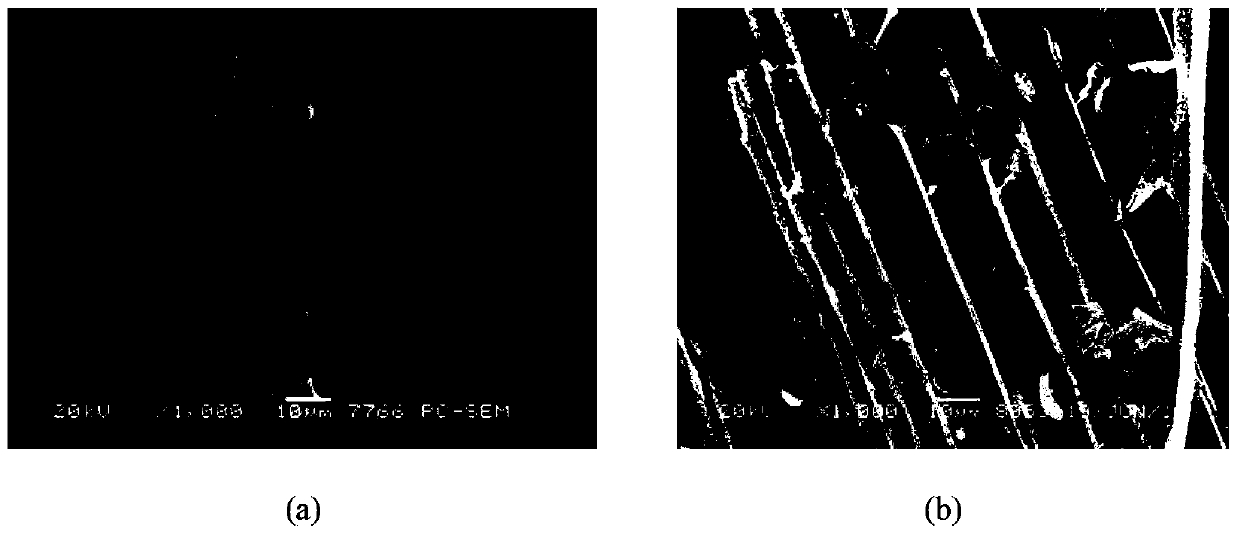Resource utilization method of plant bamboo reed after restoring heavy metal contaminated soil
A technology for polluted soil and heavy metals, which is applied in the restoration of polluted soil, chemical instruments and methods, separation methods, etc. secondary pollution problems, preventing diffusion, and improving the effect of surface adsorption capacity
- Summary
- Abstract
- Description
- Claims
- Application Information
AI Technical Summary
Problems solved by technology
Method used
Image
Examples
Embodiment 1
[0026] Example 1: Preparation of biochar by using the plant Arundo arundinacea that has been repaired in heavy metal contaminated soil
[0027] Harvest the aboveground parts of Arundo arundinacea containing heavy metals from the soil of a heavy metal-contaminated site. The harvest is washed with tap water and deionized water and cut into small pieces of 1-2 cm, which are dried at 105°C for 30 minutes and dried at 60°C. Put the dried small pieces of reed bamboo into the tubular lifting furnace, and spray 1mol / L sodium hydroxide solution at the same time, so that the sodium hydroxide accounts for 0.5wt% of the reed bamboo powder, and heat under the protection of nitrogen to control the calcination Calcined at a temperature of 300°C for 2 hours, and crushed to below 20 mesh after cooling to obtain a heavy metal-containing reed biochar. Under the calcination conditions, the yield of arundo biochar is about 55%, and the calorific value of biochar reaches 29.53kJ / g. There are a lot of...
Embodiment 2
[0028] Example 2: Toxicity leaching test of Arundo biochar containing heavy metals
[0029] The toxicity leaching experiment was carried out using the arundo biochar prepared in Example 1. The leaching experiment refers to the method of "Solid waste leaching toxicity leaching method horizontal oscillation method (HJ557-2010)", using water leaching and acid leaching to carry out the toxicity leaching test: take 20mL of deionized water, adjust the pH to 2.5 and 5.5, and then add 0.2g containing The heavy metal arundo biochar was shaken in a constant temperature water bath shaking box at room temperature for 24 hours, then centrifuged and filtered, and the content of As, Cd, Pb, and Zn in the supernatant was measured. At the same time, do a blank test (without biochar) to eliminate test errors. It can be seen from Table 1 that the content of heavy metals in the unpolluted Arundo biochar leaching solution is extremely low; the concentration of As, Cd, Pb, and Zn in the leaching solu...
Embodiment 3
[0033] Example 3: Absorption capacity test of Arundo biochar containing heavy metals
[0034] The Arundo biochar prepared in Example 1 (the raw material is Arundo arundinacea harvested from heavy metal-contaminated site soil) was used to carry out a simulated heavy metal adsorption test in wastewater. The test operation process is as follows: prepare a series of simulated wastewater containing As, Cd, and Pb with concentration gradients of 5 mg / L, 10 mg / L, 25 mg / L, and 50 mg / L. Add 0.2g of biochar to 20ml of simulated wastewater, then shake it at room temperature for 24h, measure the concentration of heavy metal ions in the solution after adsorption, and use the difference in solution concentration to calculate the adsorption of biochar on As, Cd, and Pb in the wastewater. The experimental results show( image 3 ), Arundo biochar has a certain adsorption effect on As, Cd and Pb in wastewater, and the adsorption effect increases with the increase of the concentration of As, Cd an...
PUM
| Property | Measurement | Unit |
|---|---|---|
| adsorption capacity | aaaaa | aaaaa |
| adsorption capacity | aaaaa | aaaaa |
Abstract
Description
Claims
Application Information
 Login to View More
Login to View More - R&D
- Intellectual Property
- Life Sciences
- Materials
- Tech Scout
- Unparalleled Data Quality
- Higher Quality Content
- 60% Fewer Hallucinations
Browse by: Latest US Patents, China's latest patents, Technical Efficacy Thesaurus, Application Domain, Technology Topic, Popular Technical Reports.
© 2025 PatSnap. All rights reserved.Legal|Privacy policy|Modern Slavery Act Transparency Statement|Sitemap|About US| Contact US: help@patsnap.com



